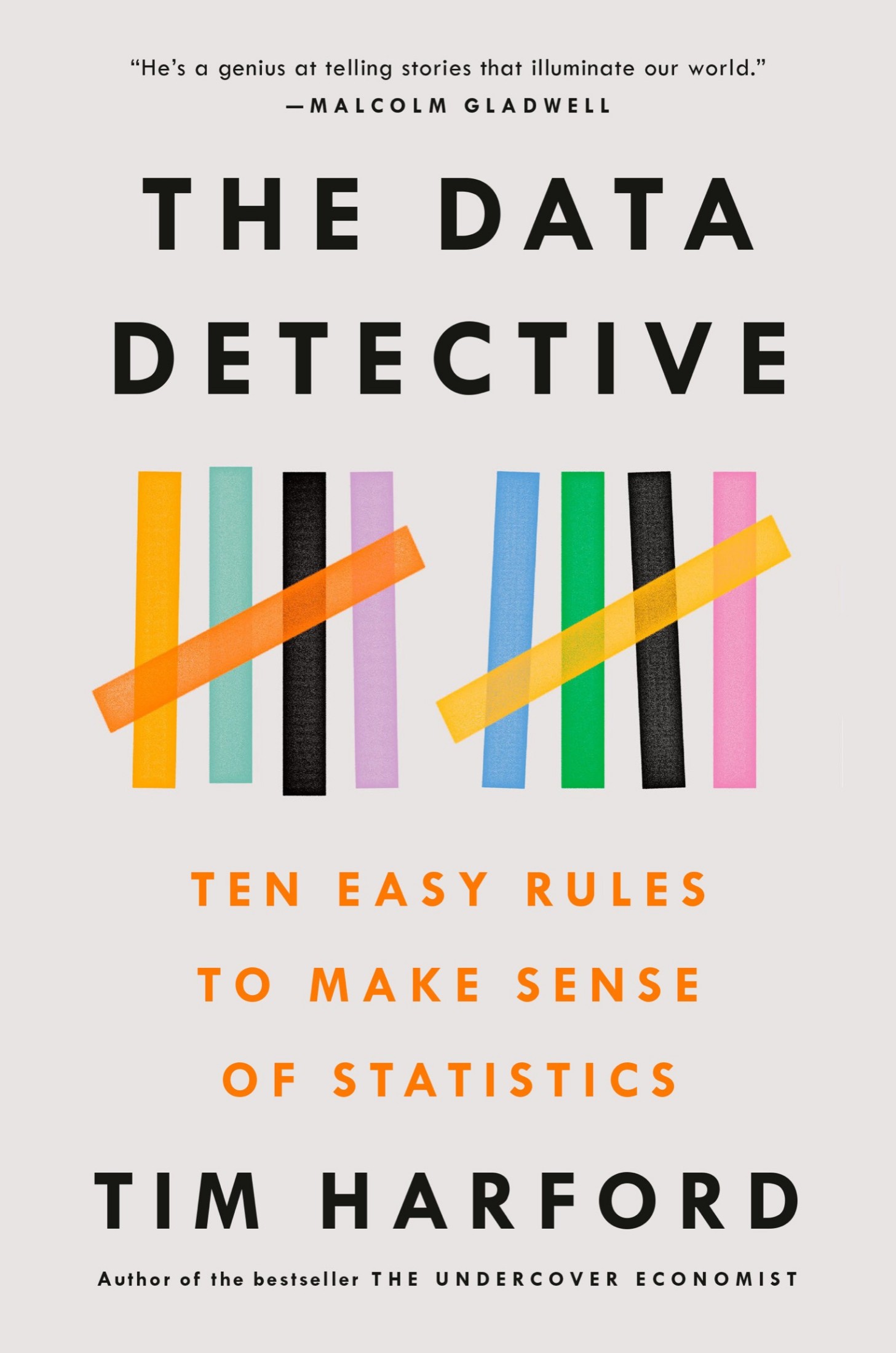
The Data Detective
Ten Easy Rules to Make Sense of Statistics
کتاب های مرتبط
- اطلاعات
- نقد و بررسی
- دیدگاه کاربران
نقد و بررسی

December 1, 2020
"Understanding causation is tough even with good statistics, but hopeless without them." British economist and historian Harford crunches the numbers and finds us gullible--but corrigible. Regarding the 1954 bestseller How To Lie With Statistics, Harford finds it overly cynical: "What does it say about statistics--and about us--that the most successful book on the subject is, from cover to cover, a warning about misinformation?" It's a pregnant question, because of course people lie with numbers; indeed, the very author of that earlier book was pressed into service by the tobacco industry to prove that there was no link between smoking and cancer. Thankfully, notes Harford, British medical researchers worked out the smoking numbers for themselves, with the result that "doctors became the first identifiable social group in the UK to give up smoking in large numbers." (This was years before the Surgeon General's report in the U.S.) As the author rightly notes, there's no reason to mistrust numbers, but we must interrogate them better, adopting the hopeful, forward vision of those researchers in the place of industry flunkies. True, there are all kinds of ways in which even the best prepared of us can overlook the truth that the numbers reveal. There's a wishful-thinking bias called "motivated reasoning," as well as the "powerful illusion" of "naive realism" by which we project our thinking onto the world and wonder why it doesn't behave according to our rules. Harford also delves into "premature enumeration," where we look at the numbers without quite understanding the questions we're asking of them. Defending the process of polling and decrying the totalitarian habit of certain politicians to invent their own numbers, Harford lays out 10 commandments of examining statistics--e.g., ask tough questions about the data, be aware that something may be missing--along with a worthy "golden rule": "Be curious." An entertainment for numerate readers and a user-friendly introduction to statistics for beginners.
COPYRIGHT(2020) Kirkus Reviews, ALL RIGHTS RESERVED.

January 1, 2021
Harford, author, columnist for the Financial Times, and BBC broadcaster, releases his tenth book at an opportune moment. We're all facing endless stats about COVID-19, while also wading through information in a particularly divisive political climate. How can we make sense of all this data? Conquering the intimidating world of statistics is a daunting task, but Harford has a knack for making complex subjects accessible. On the surface, this is about making sense of statistics, but at its core, Harford's book is focused on encouraging readers to maintain a sense of curiosity about information and data. He presents ten rules, which he expertly weaves into historical contexts to explain the importance of each tenet. These rules will not trigger flashbacks to math class or economics 101, instead they have to do with intuition and asking the right questions. The Data Detective is sure to be another success from Harford, and is a powerful tool, especially in the current climate, one that will give readers the confidence to delve into data and statistics in a new and meaningful way.
COPYRIGHT(2021) Booklist, ALL RIGHTS RESERVED.

























دیدگاه کاربران